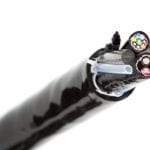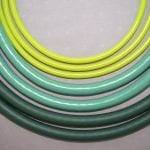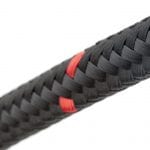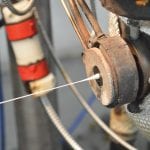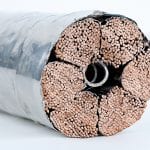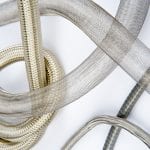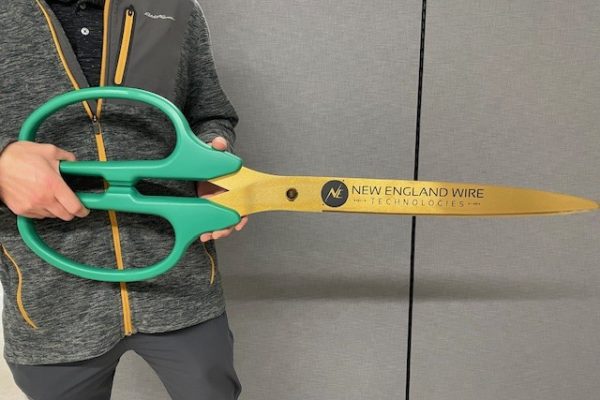The evolution of robotics and automation have transformed the modern manufacturing process. The intelligent factory of the future requires a level of flexibility and sophistication never before seen. From advanced sensors to autonomous motion control, components that can withstand ever increasing extremes in environment and performance will be imperative to remain productive.
We sat down with New England Wire Technologies Design Engineer, Tom Paquet, to pick his brain about the special anatomy and design behind today’s robotic cables. Let’s find out about the unique features required to support one of the hottest industries in the marketplace…
Q: So Tom, what kind of cable performance requirements do you typically see for robotic applications?
A (Tom): Honestly, we see just about everything. With robots being used for an increasing number of applications, there are requirements beyond just power, like signal, data and high voltage situations. It’s always about “where is this cable going to live?” That is, what environment will it be in? It’s important for us to understand if there are conditions that over time could compromise the integrity of the insulation. If it’s in a medical application, there are typically stringent cleaning requirements that we need to address. It’s also really important that we understand how the robot is going to move and what parts may rub on the cables, so designing for durability and sometimes abrasion, and always flexibility and flex life are critical.
Q: Can you explain the difference in the flexing movements required for robotics?
A (Tom): We see requests for cables to handle bending, torsional flexing, rolling, and combinations of all of those. Typically with robotics, flex life is more critical than overall flexibility.
Q: So, what is the difference between flexibility and flex life?
A (Tom): Flexibility is how easily the cable moves when handled. Almost all requests we see have a flexibility requirement in terms of how easily the cable moves, or how limp or “dead” it is when it lies on a surface. It can be tricky with robotics, because all of that movement you gain from flexibility is actually causing micro-movements within the cable which introduces friction and stress points which can create a weakness that eventually becomes a failure over time.
Flex life is a function of how many times you can flex the cable. Generally, flex life is given in the terms of “cycles”. When you bend something back and forth, we call that one cycle. So something that is very flexible may only have a few hundred or thousand cycles before it fails, depending on the cable construction. But something designed for very good flex life may withstand hundreds of thousands or millions of cycles, which is critical for robotics applications. Getting the correct balance between flexibility and flex life is super important in robotic design.
Q: What design features are important to promote better flex life?
A (Tom): The first step is to fully understand what type of motion the robot will be performing. So we need to discuss if this is a bending application, a torsional application, or something else as that can make a difference in some of our material choices.
Q: And what are the special material considerations for good flex life cables?
A (Tom): We’re almost always looking at alloy stranding for the conductors because they are harder and therefore deform less plastically. Without getting too much into Metallurgy 101, all materials first deform elastically and then plastically. So if you can bend something and it will return to its original shape, that’s an elastic deformation. If you bend it and it doesn’t return, that’s a plastic deformation – which is basically just “damage”. Harder metals, like alloys, can withstand more wear and tear before developing these imperfections, so that’s why alloys are a good choice.
Using plastics that will not fatigue quickly and fail is critical. Very flexible plastics tend to have poor flex life, and for the very same reason as alloys – you don’t want plastic deformation, you are looking for the elastic deformation. So we tend to use hard plastics for the primary conductors like polyesters or fluoropolymers. The jacket insulation should have a nice, tight fit to hold all of your conductors together and get a good bond, which is a good reason to use a polyurethane as that already has naturally good flex life and it is very abrasion and cut-through resistant.
Q: Why is cable design and geometry so important?
A (Tom): I mean, ideally we want an entirely symmetrical cable with all identical conductors – this ensures that everything equally shares any sort of stress burdens. In reality that hardly ever happens, so we have to be able to identify the weakest links, fortify them if possible, and put them in low-stress positions. Larger cables allow for more mechanically robust designs and larger bend radiuses, but real estate may mean there is less room for the cables in the overall design. Sometimes by the time people get to the cable portion of their finished robot design, they’re left with pretty minimal space for the cable to live – “this is the space we have left, what can you put in there to accomplish these goals?”
Q: Does NEWT provide testing for robotics cables?
A (Tom): We do offer a battery of test options that can help mimic real-life performance, allowing us to provide customers with reliable results. For example, for robotic designs, we commonly perform traditional flex testing which is often referred to as a “tick-tock” test for bend endurance, torsional stress testing, and rolling torsional testing which is a combination of torsional and flex testing. If customers have special testing requirements, we’re always happy to work with them to develop custom flex tests as well.
Want to see a quick video tour of our Mechanical Testing Lab? Click here.
Q: Are aesthetics important for robotics cables?
A (Tom): The way the end product looks is always important, especially when the cables are visible to users within the environment. You want the product to look professional. For medical robotics, there is a focus on clean, smooth, light-colored, probably glossy finished, and easy to clean cables. For other robotics the aesthetic may lean more toward something “cool” looking, and may use neon or bright colors. Onsite at NEWT, we have a custom color lab where we do color matching and custom color formulations for a wide variety of compounds and finishes, so the options are nearly endless.
Thanks Tom, this has been really helpful! Want to watch a video version of this discussion? View it here.
Tom has explained just a few of the key features of robotics cable design. If you have additional and/or special requirements for your project, Contact Us! We have provided custom cable to the robotics industry for decades. Our expert team of design engineers work closely with each customer to develop innovative, one-of-a-kind wire and cable solutions.
Tom Paquet has been with New England Wire Technologies for over 5 years. His fondness for engineering came early with his love of Legos. He had a first generation Mindstorms® kit that he built all kinds of robots with as a kid. Graduating from university with a degree in Mechanical Engineering, Tom has worked as both a Process Engineer and Design Engineer at New England. Currently, his area of special interest/expertise is Design for Manufacturability.
A lover of adventure and the great outdoors, Tom recently took a 3-month road trip where he lived out of his truck and visited 35 national parks! His favorite park is a tie between Sequoia and Carlsbad Caverns. As he says, “they’re both larger than life!” This summer, Tom also hiked the Long Trail which runs the length of the state of Vermont and is the oldest long-distance trail in the US. His secret talent? Tom is an aspiring cartoonist! How cool is that?







